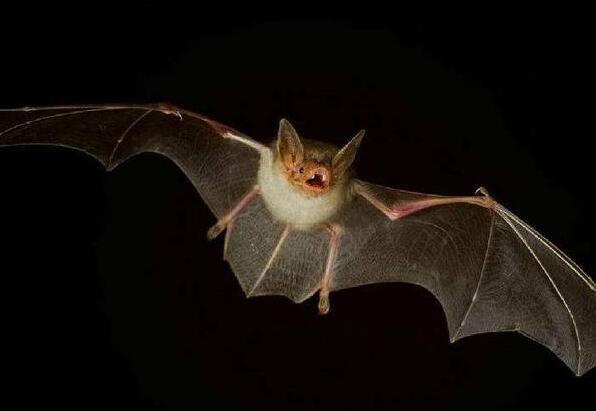Although scientists know that some bats can fly to an altitude of 1,600 meters, how do they do this when there is no night updraft? Now, in a paper published in “Contemporary Biology” on February 5, researchers have revealed the secret of bats flying high.
Facts have proved that European free-tailed bats have powerful flying capabilities. Researchers have even measured their autonomous flying speeds of 135km/h. Of course, this also depends on the uplifting terrain—the airflow rises as the terrain raises, thereby helping They fly higher, just like birds do during the day.
However, because it is difficult to find rising warm air on cold nights, bats have to rely on suitable areas to reach a certain flying height.
Teague O’Mara of Southeastern Louisiana University and the Max Planck Society Institute of Animal Behavior in Germany explained: “We have shown that wind and terrain can predict areas that can support bats to fly upwards. They use these factors to reach high altitudes while lowering. Flight speed. Then, the bat guided itself to ascend based on the wind conditions, cleverly using the vertical wind energy in the night environment.”
In order to obtain these findings, O’Mara and colleagues installed high-resolution GPS recorders for these free-tailed bats—recording their position in three-dimensional space every 30 seconds.
Researchers followed them for 3 days, about 6 hours per night.
Data shows that bats appeared after the sun set, flying non-stop all night, and then returned to their habitat.
They observed that bats usually fly along their familiar routes, but occasionally they fly higher, reaching a height of about 1,609 meters above the ground in 20 minutes.
Compared to climbing at a medium altitude of about 300 meters, bats climb to the sky faster, longer, and have lower airspeeds.
Most bats descend rapidly after reaching the highest point, forming a trajectory similar to a roller coaster.
The researchers were surprised to find that the high-altitude flight of bats is very predictable.
The data shows that the bats use the same type of terrain-although not always the exact same locations, the wind in these places will sweep up the slopes and bring them up to the sky.
The results of the study show that the way bats solve the flight problem is similar to that of birds-only at night.
“These free-tailed bats seem to have found a way to minimize the energy required to find food every night.”
O’Mara said, “For an animal that can only perceive 30 to 50 meters ahead, this is a very incredible challenge. Flying to an altitude of 1,600 meters requires a high level of energy, and these bats have found the right wind to fly. method.”
O’Mara said, “We have to figure out how they do this and whether they can be applied to other scenarios,” such as high-speed and low-energy bionic flying equipment.






